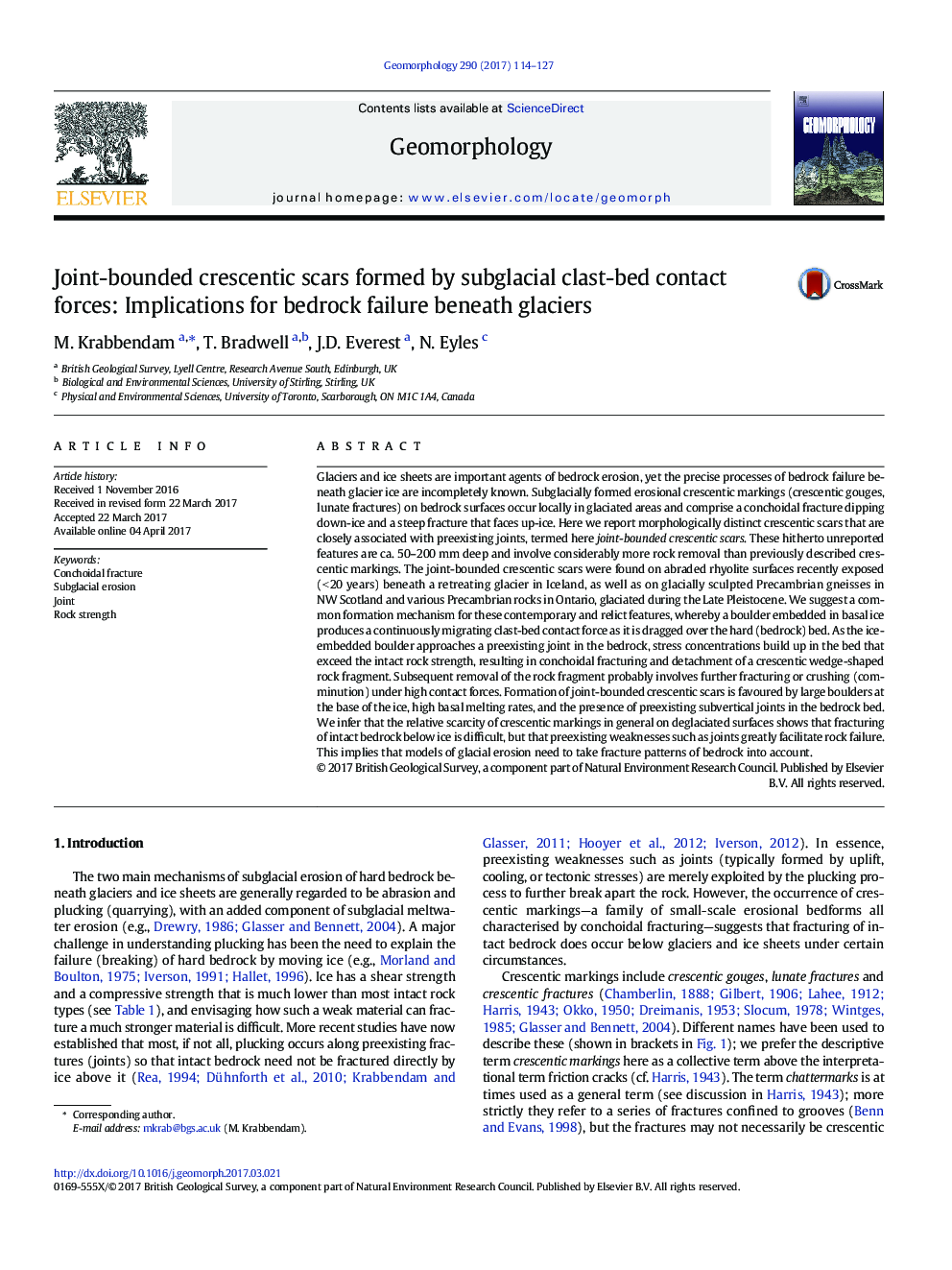| کد مقاله | کد نشریه | سال انتشار | مقاله انگلیسی | نسخه تمام متن |
|---|---|---|---|---|
| 5780927 | 1635359 | 2017 | 14 صفحه PDF | دانلود رایگان |
عنوان انگلیسی مقاله ISI
Joint-bounded crescentic scars formed by subglacial clast-bed contact forces: Implications for bedrock failure beneath glaciers
ترجمه فارسی عنوان
زخمهای کریستالین مشترک با تشکیل نیروهای تماس با زیردریایی زیردریایی: اثرات ناشی از شکست سنگ بستر در زیر یخچالهای طبیعی
دانلود مقاله + سفارش ترجمه
دانلود مقاله ISI انگلیسی
رایگان برای ایرانیان
کلمات کلیدی
شکستگی کونکوییدی، فرسایش گل زیره مشترک قدرت سنگ،
موضوعات مرتبط
مهندسی و علوم پایه
علوم زمین و سیارات
فرآیندهای سطح زمین
چکیده انگلیسی
Glaciers and ice sheets are important agents of bedrock erosion, yet the precise processes of bedrock failure beneath glacier ice are incompletely known. Subglacially formed erosional crescentic markings (crescentic gouges, lunate fractures) on bedrock surfaces occur locally in glaciated areas and comprise a conchoidal fracture dipping down-ice and a steep fracture that faces up-ice. Here we report morphologically distinct crescentic scars that are closely associated with preexisting joints, termed here joint-bounded crescentic scars. These hitherto unreported features are ca. 50-200Â mm deep and involve considerably more rock removal than previously described crescentic markings. The joint-bounded crescentic scars were found on abraded rhyolite surfaces recently exposed (<Â 20Â years) beneath a retreating glacier in Iceland, as well as on glacially sculpted Precambrian gneisses in NW Scotland and various Precambrian rocks in Ontario, glaciated during the Late Pleistocene. We suggest a common formation mechanism for these contemporary and relict features, whereby a boulder embedded in basal ice produces a continuously migrating clast-bed contact force as it is dragged over the hard (bedrock) bed. As the ice-embedded boulder approaches a preexisting joint in the bedrock, stress concentrations build up in the bed that exceed the intact rock strength, resulting in conchoidal fracturing and detachment of a crescentic wedge-shaped rock fragment. Subsequent removal of the rock fragment probably involves further fracturing or crushing (comminution) under high contact forces. Formation of joint-bounded crescentic scars is favoured by large boulders at the base of the ice, high basal melting rates, and the presence of preexisting subvertical joints in the bedrock bed. We infer that the relative scarcity of crescentic markings in general on deglaciated surfaces shows that fracturing of intact bedrock below ice is difficult, but that preexisting weaknesses such as joints greatly facilitate rock failure. This implies that models of glacial erosion need to take fracture patterns of bedrock into account.
ناشر
Database: Elsevier - ScienceDirect (ساینس دایرکت)
Journal: Geomorphology - Volume 290, 1 August 2017, Pages 114-127
Journal: Geomorphology - Volume 290, 1 August 2017, Pages 114-127
نویسندگان
M. Krabbendam, T. Bradwell, J.D. Everest, N. Eyles,
